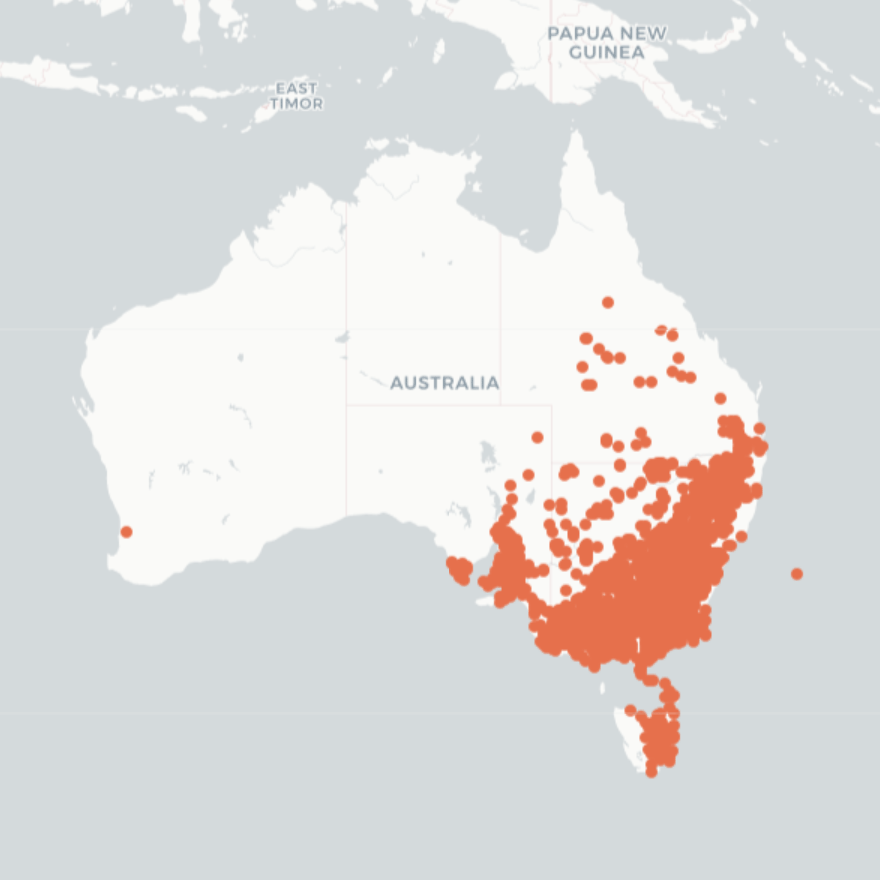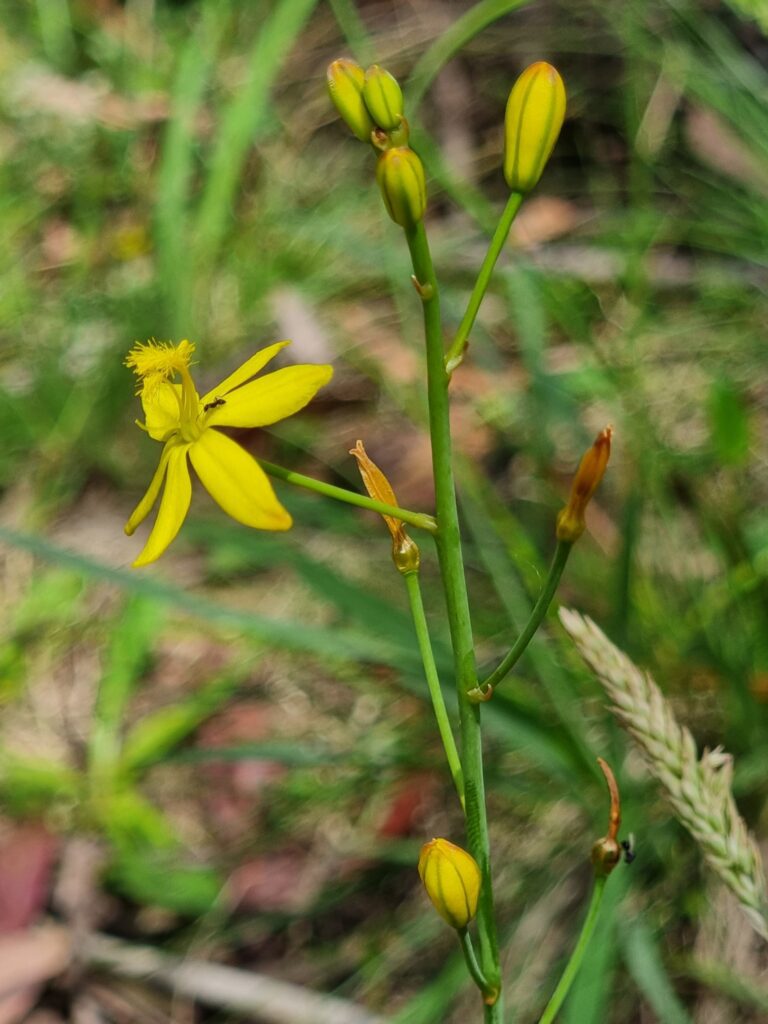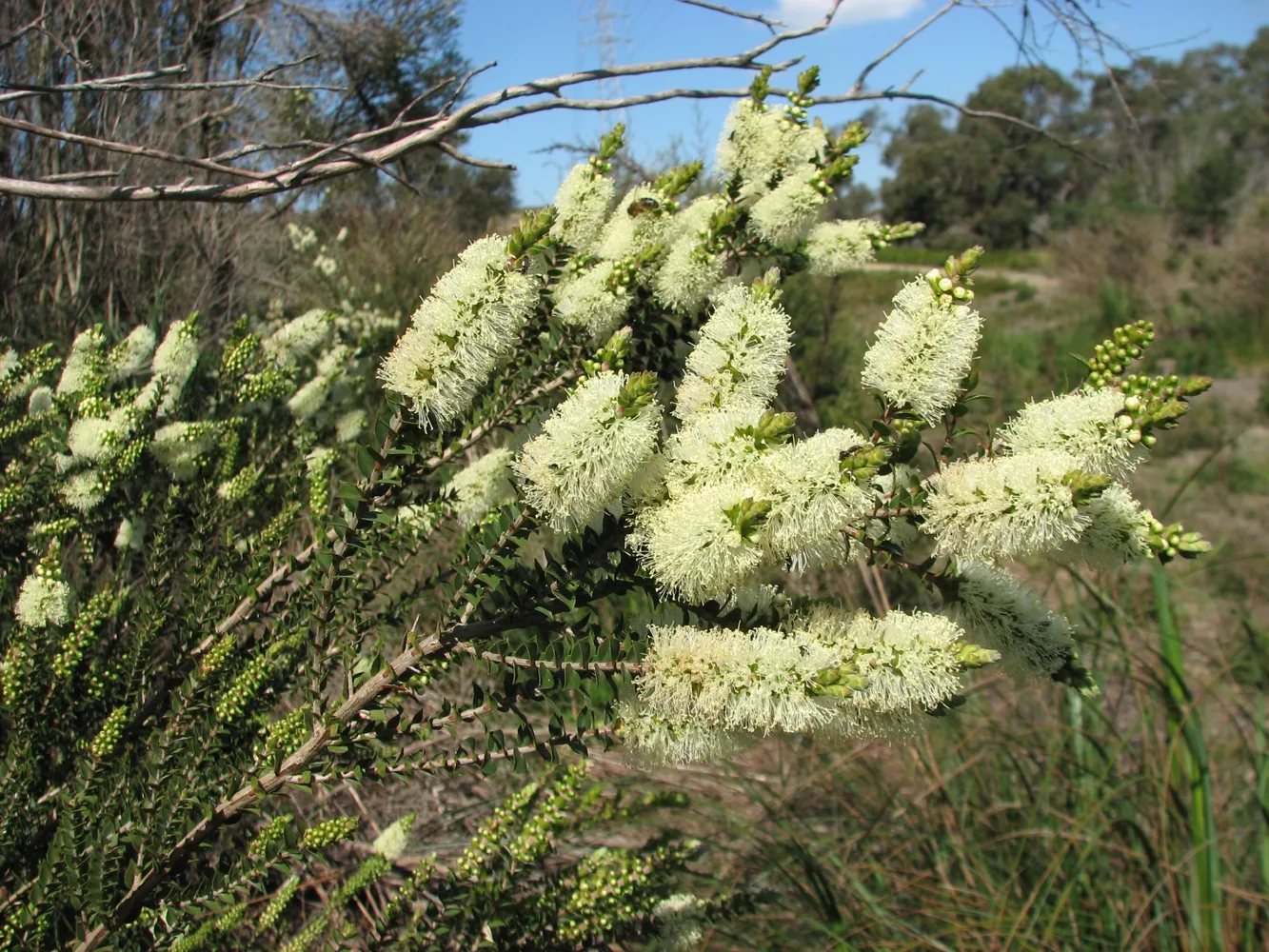Description
This common plant goes by many common names including; Bulbine Lily, Wild Onion, Golden Lily, Leek Lily, Yellow Onion Weed and Native Leek. Indigenous names include ‘Parm’, ‘Pike’ and ‘Puewan’.
The Bulbine Lily, (Bulbine bulbosa), is distributed widely through south-eastern Australia and is common through the dry forests regions, grasslands and rocky outcroppings.
As a species it can survive in a range of environmental conditions; swamps through to alpine altitudes and enjoys wet soils.

Distribution
Reaching up to 75cm in optimal conditions this stalked plant displays flowers resembling the daffodils from the northern hemisphere, however this fragrant Australian flower (which emerges between September and March) can last for as little as a single day.
Farmers and other herbivore keepers should be aware that over grazing of foliage by animals can prove poisonous as toxins are present in low doses and can build up in animal systems.
Indigenous uses; once fully established the corm (a swollen stem base) can be roasted and eaten all year round. Not only are these relatively sweet but are a good source of calcium and iron.
Propagation
There are two main ways to propagate the Bulbine Lily:
- By collecting the seeds when they are exposed when the fruit capsule opens, generally between November – December. These seeds then need to be stored for 2-3 months before sowing. Germination can be expected in around 35 days.
- Plants can also be propagated by dividing the tuberous corm in mature pants after he flowering period is over. This divided root stock should be stored in dry material and replanted in the spring.

References – https://bie.ala.org.au/species/https:/id.biodiversity.org.au/taxon/apni/51737827 and https://resources.austplants.com.au/plant/bulbine-bulbosa/

